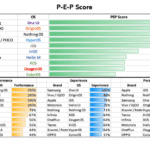The only exception to this would be AI where telecom operators would be interested in as that promises quick monetisation.
By now we have admitted that 5G has not be able to deliver the ‘transformational’ promise it would sell on. No doubt that the vendor community did make money, but the operators are yet to see a moat in 5G. There are already reports that we can see a tariff revision sometime in June-July of this year, but again that cannot be attributed to 5G. Its rather an attempt by the operators to improve ARPU that will in return help recover the investments made on 5G. As per research done by Techarc, we are estimating the contribution of telecom to be 27% in the $1 trillion digital economy India is likely to achieve by 2027. This GDP contribution of the sector by that period should cross 9% from the present 6.4-6.5%. However, to achieve this, there is consistent investment required in the infrastructure and core networks. Between 2023-2027, the cumulative investment in telecom infrastructure and core networks is likely to cross and core networks is likely to cross $312 billion. This would also be the time by which India would have already geared up for 6G.

Within 5G, FWA is the only revenue assuring enablement for the telecom operators. The recently published Nokia MBiT report also points towards the current consumption and future potential of 5G FWA. This will allow operators to expedite 5G coverage in several homes, potentially millions bypassing the last mile connectivity hassles. As smart home as a concept continues to gain in India, with different cohorts of users having their own interpretation of what it means, FWA could become the hub offering high-speed connectivity to such homes. In fact, the telecom operators must start offering smart home as a solution with FWA connectivity bundled with it. But then with 5G FWA, it still remains a plain high-speed connectivity medium. 5G was never just about that!
The operators have already invested billions in 5G and are yet to reap benefits. With the entire ecosystem not able give one convincing use case that consumers as well as enterprises could pick up and pay for, the investment burden has got shouldered on the operators. They now have every right to take a pause and emphasise on recovering the investments and make profits too. After all, they too are accountable to their stakeholders, shareholders, and other investors to make profits.
Some of the technologies did generate a considerable interest in between. For instance, satellite for communications. But like 5G, the return against investment is too slow and staggered for operators. They will be able to offer better connectivity and coverage to a consumer segment, who don’t have strong paying capacity, at least for now. Similarly, the thought of telecom operator boards would be to focus on recovering 5G investments though tariff revisions and other such financial interventions rather than going with further investment in technologies that are not offering assuring streams of revenues, that too with profitability. The operators are also not too excited about O-Ran and other similar ‘disruptions’ where commercial viability is opaque.
For the next 3-5 years, the telecom operators would prefer business as usual rather than venturing into highly risky propositions. They would try to skim the investments they have made so far and put in money in adding capacities as well as improving the existing coverage.
The only exception to this broad thought process would be AI. AI today already has several startups in India. They have their MVP (minimum viable products) ready and are looking for scale to be able to monetise. The operators can make strategic associations, in many cases handholding to these AI startups and offer these as value added services to their existing customers. These could be both at the enterprise as well as residential. A lot of AI startups have their products around content creation and content enhancement. These solutions are apt for the India Inc., especially the MSMEs where telecom operators can play a pivotal role in scaling them up and extending these pay-as-you-go services to their enterprise clientele. Similarly, there are solutions around martech, edutech, adtech, to highlight a few.
The win-win situation here is that the operators don’t have to invest in building these solutions. They have either have exclusive arrangements or possibly do partial to complete acquisition of such promising AI startups sprouting across the country. The investment in them would not be of the scale required for infrastructure and core networks, and the ROI is very much visible.
The telecom operators need to create a portfolio of AI products for both enterprise and residential customers, which they can build through collaborations with the AI startups in the country. This portfolio could be offered as value added services to the existing customers that not only brings in more revenues for the operators but also positions them high on the digital landscape by offering products and services enabled through AI.
It’s time for the telecom operators to recalibrate their focus and put in their efforts at the board level towards promising revenues from AI ecosystem than still overemphasising on how to monetise 5G. 5G monetisation may not happen to the extent anticipated and by the time we see some potential, 6G would be knocking the doors.





